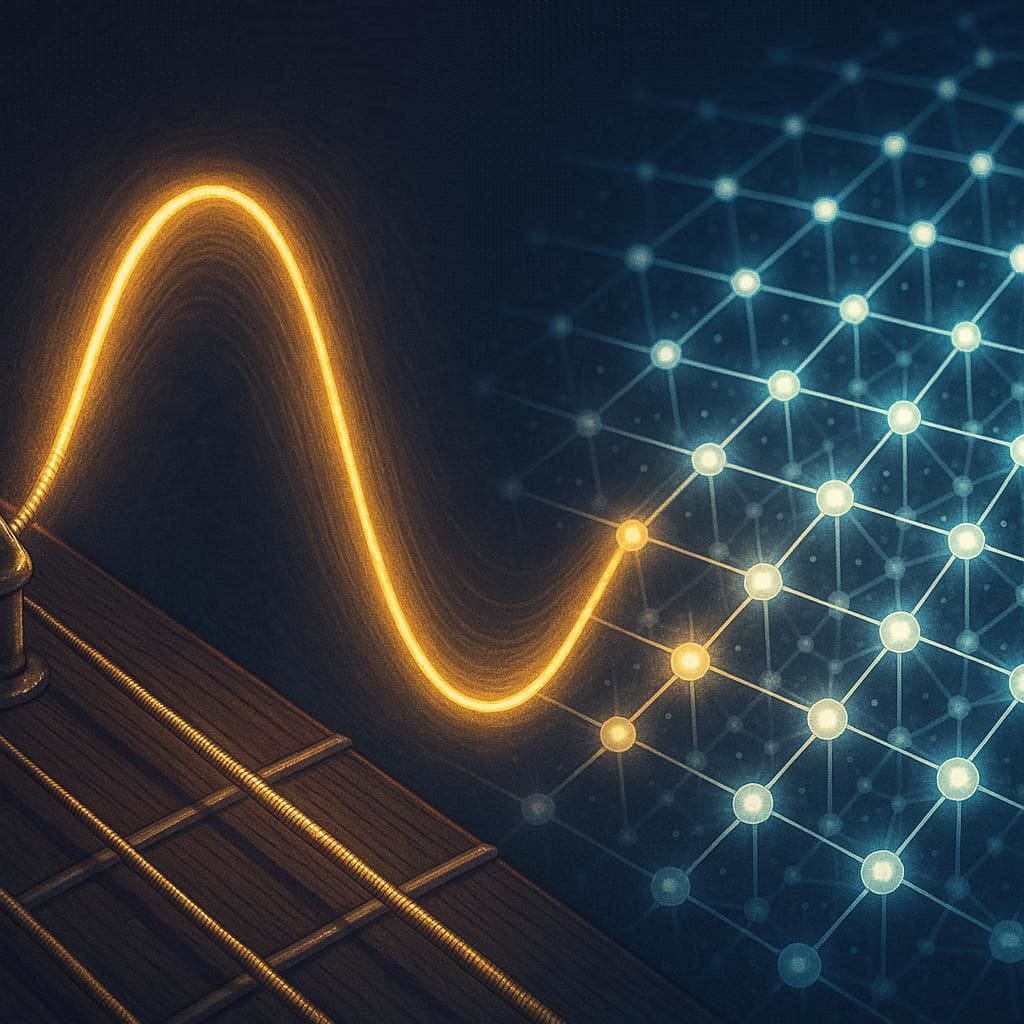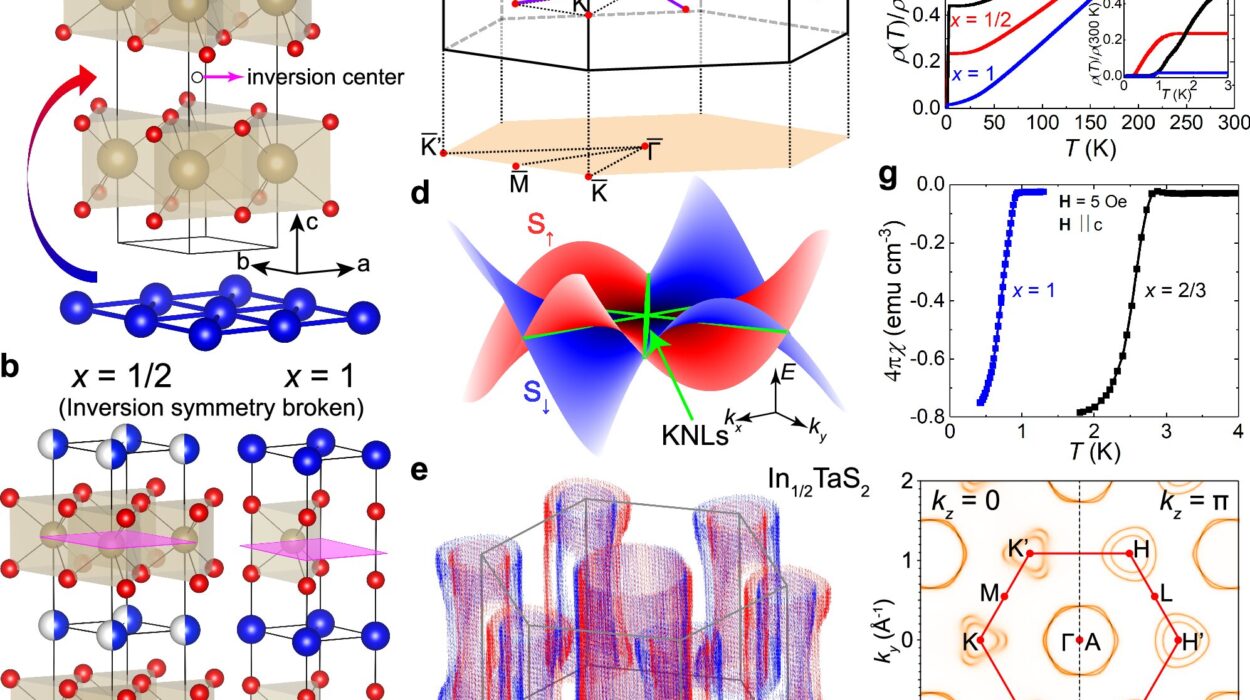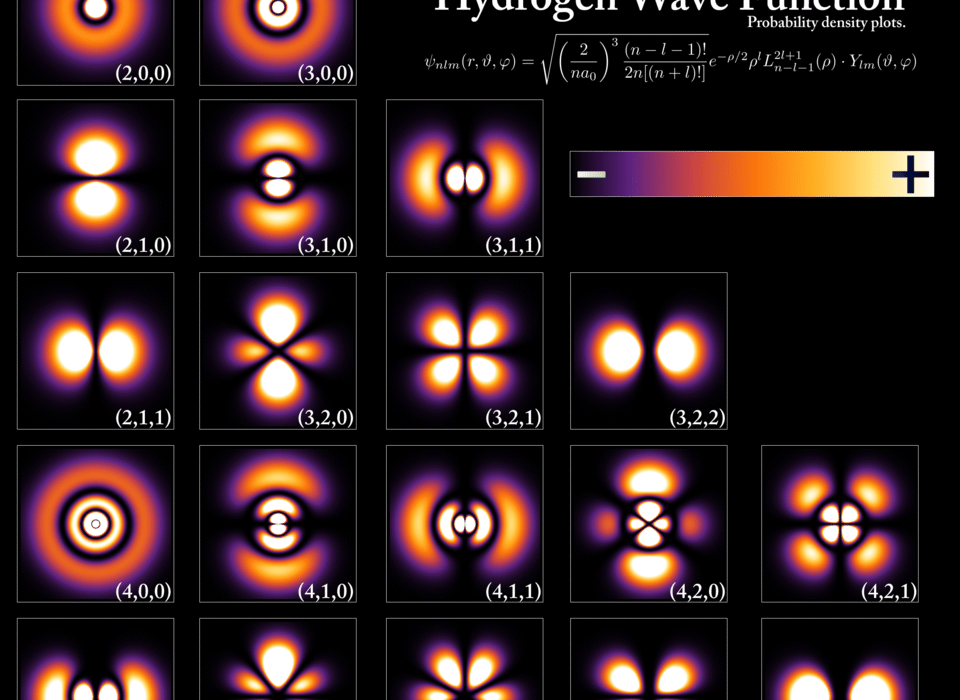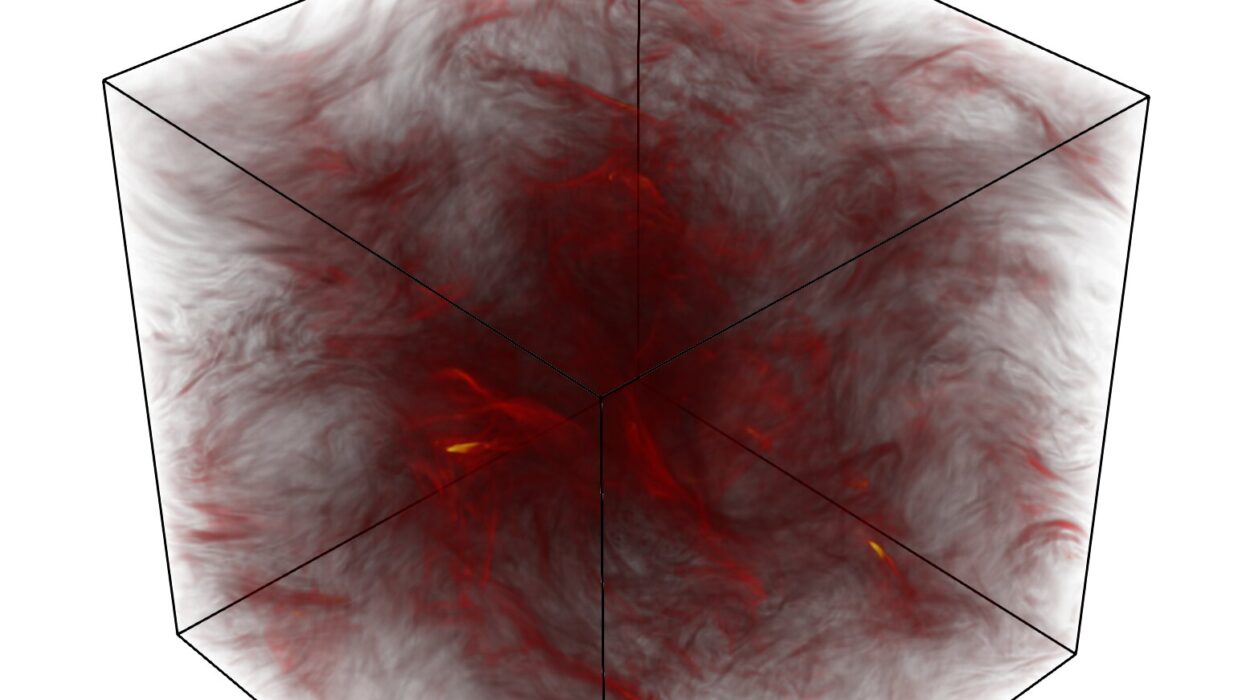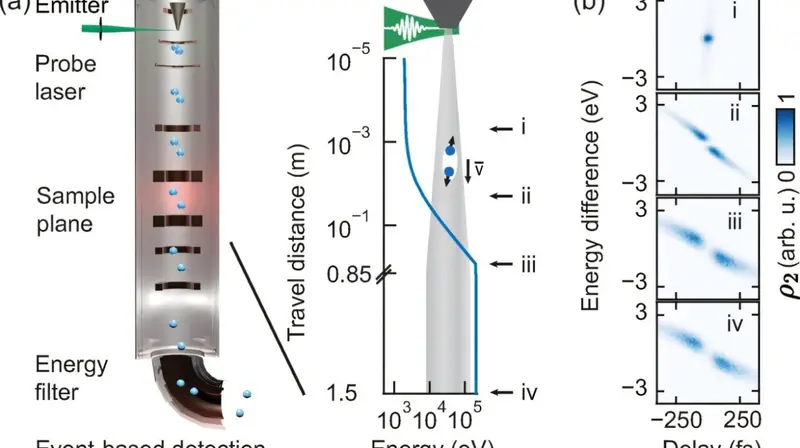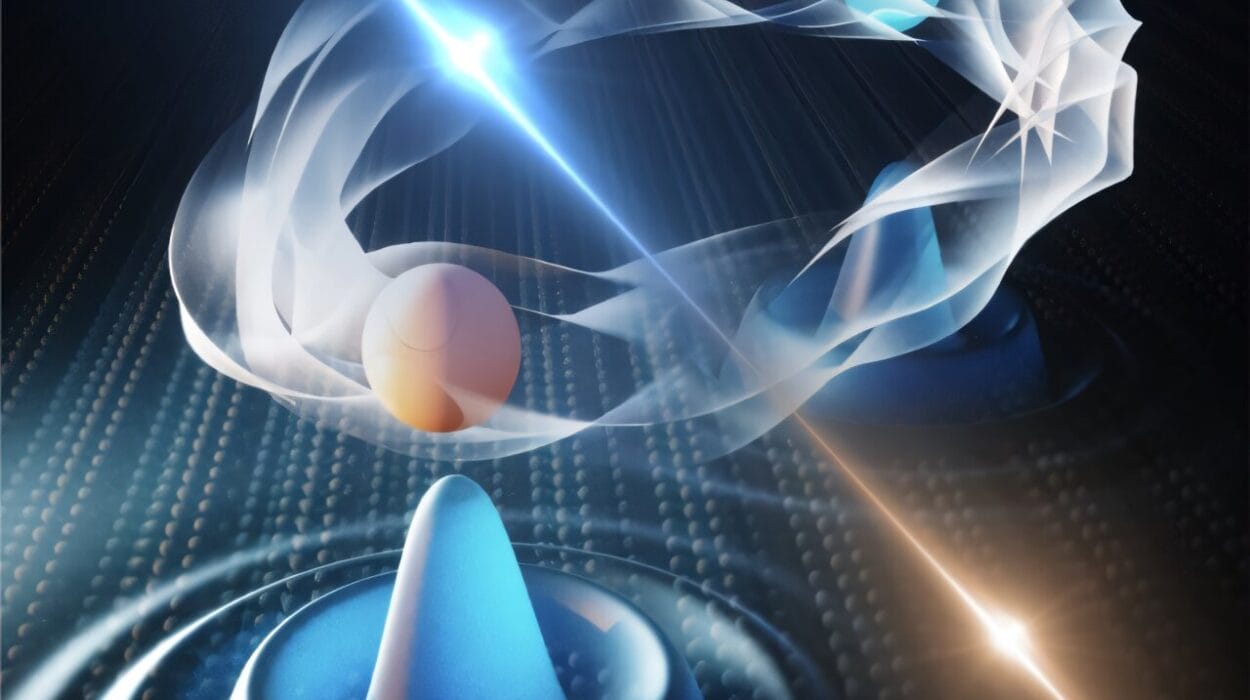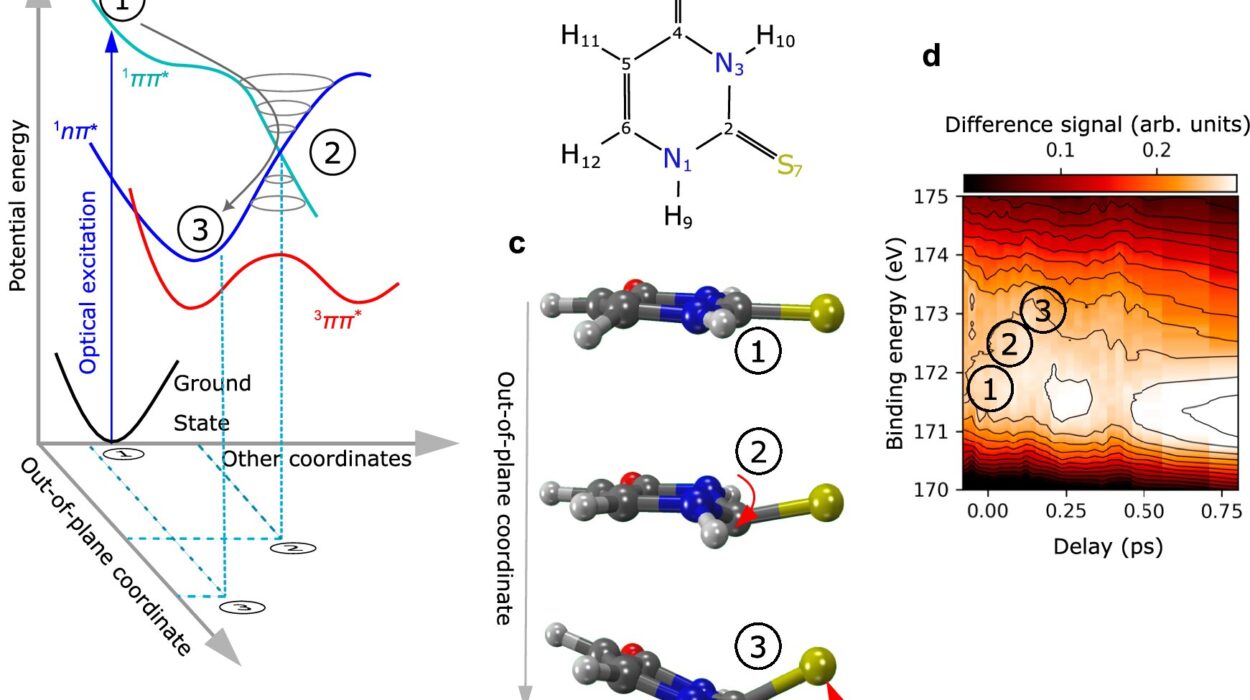Pluck a guitar string and it shivers with sound, each vibration smaller than the last until silence settles in. Or picture a child’s swing, slowly rocking to stillness after being pushed. These are classic examples of what physicists call damped harmonic oscillators—systems where vibrations lose energy over time. In our everyday world, their behavior is easily explained by Newton’s laws of motion.
But in the atomic world, things do not play by Newton’s rules. Atoms live in the bizarre domain of quantum physics, where uncertainty reigns and intuition falters. That’s where University of Vermont physicist Dennis Clougherty and his student Nam Dinh stepped in. Together, they asked a deceptively simple question: could there be a quantum version of the familiar guitar-string motion?
The answer, published July 7, 2025, in Physical Review Research, is a resounding yes. And after nearly a century of failed attempts, they finally found the exact solution.
A Century-Old Riddle
The problem has haunted theorists for decades. In 1900, before quantum mechanics even existed, British physicist Horace Lamb described how a vibrating particle inside a solid might lose its energy to the surrounding material. Using Newtonian mechanics, Lamb showed that as the particle shook, it sent out elastic waves that drained its motion—damping it, much like a guitar string giving up its energy to the air.
When quantum physics arrived a few decades later, scientists naturally tried to reframe Lamb’s problem. But progress was slow. At quantum scales, every vibration, every flicker of energy, has to obey the Heisenberg uncertainty principle—which dictates that the more precisely you know a particle’s position, the less precisely you can know its momentum, and vice versa. Most mathematical approaches to quantum damping ended up breaking this foundational rule.
“It’s been a long-standing difficulty,” Clougherty explains. “The challenge is to describe a particle losing energy in a way that still respects Heisenberg’s uncertainty principle.”
The Breakthrough in Vermont
Clougherty and Dinh’s insight was to take Lamb’s classical model and reformulate it completely in quantum terms. The key lay in recognizing that an atom in a solid is never alone. It is constantly interacting with countless other atoms around it, a problem physicists call a many-body system.
“To preserve the uncertainty principle, you have to include the atom’s interaction with all the other atoms in the solid,” says Clougherty.
That’s where the math becomes both dizzying and beautiful. Using a sophisticated tool known as a multimode Bogoliubov transformation, the UVM researchers managed to simplify the complex web of interactions into something manageable. Their solution describes the system’s behavior in a special quantum state known as a multimode squeezed vacuum—a state where uncertainty can be redistributed, reducing noise in one property at the expense of another.
The result? For the first time, a complete, exact quantum description of a damped harmonic oscillator.
Why It Matters
At first glance, this may seem like pure theory. But in quantum physics, precision is power. Understanding how uncertainty can be squeezed and redistributed opens doors to extraordinary new technologies.
One possibility is in ultra-precise measurement. By reducing uncertainty in the position of an atom, the UVM model suggests new ways to push beyond the so-called standard quantum limit—a threshold once thought to be unbreakable. In practice, this could lead to nanoscale measurement tools, capable of detecting distances smaller than anything previously possible.
This isn’t just speculation. The same kind of squeezed quantum states were crucial to the development of the first gravitational wave detectors, which in 2015 measured distortions in spacetime thousands of times smaller than an atomic nucleus. That breakthrough earned a Nobel Prize in 2017. Now, Clougherty and Dinh’s work extends the reach of squeezed states to a whole new class of quantum systems.
From Student to Scholar
The project also highlights the power of mentorship and persistence in science. Nam Dinh, who earned his bachelor’s and master’s degrees in physics at UVM before moving into a Ph.D. program in mathematics, played a central role in the discovery. “In classical physics, it is obvious that oscillators lose energy,” Dinh notes. “But in the quantum regime, that’s not so straightforward. We wanted to show exactly how it happens.”
Together, student and professor cracked a problem that had resisted solution for nearly a hundred years.
The Mystery Continues
Physics is often defined by its limits: the speed of light, the absolute zero of temperature, the irreducible uncertainties of Heisenberg’s principle. Yet again and again, physicists find ways to stretch what seems possible—by reframing problems, by shifting perspective, or by daring to ask naïve-sounding questions.
What Clougherty and Dinh have achieved is more than a mathematical trick. It is a new lens through which to view the quantum world. Their solution doesn’t close the book on Lamb’s problem—it opens a new chapter, with tantalizing hints of future discoveries in quantum measurement, sensing, and beyond.
As Einstein once said, “The important thing is not to stop questioning.” In Vermont, two physicists followed that advice—and, in doing so, gave us a new way to hear the quiet music of the quantum guitar.
More information: Dennis P. Clougherty et al, Quantum Lamb model, Physical Review Research (2025). DOI: 10.1103/9fxx-2x6n
